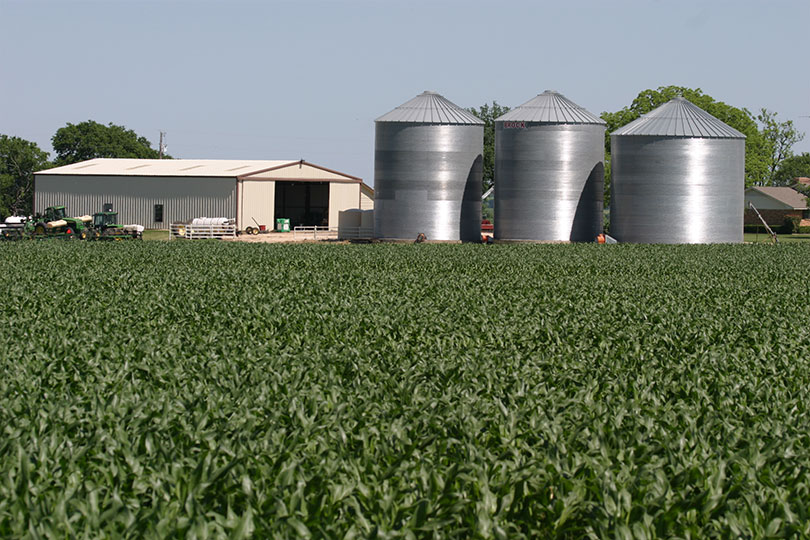The U.S. Department of Agriculture (USDA) released updated farm income figures in its most recent Farm Sector Income Forecast.
The report, released Sept. 1, anticipates an increase in net farm income, a broad measure of farm profitability, for 2022. The agency forecasts net farm income at $147.7 billion, up 5.2% from 2021’s $140.4 billion.
This increase contrasts with USDA’s original February estimates that forecasted a $5.4 billion decline in net farm income.
When USDA’s September figure is adjusted for inflation, however, net farm income is expected to decline $0.9 billion from 2021.
Net farm income breakdown
Direct government payments are forecast to decrease by $12.8 billion, or 49.7%, between 2021 and 2022.
The decrease corresponds to reductions in both USDA pandemic assistance, which included payments from the Coronavirus Food Assistance Programs and other pandemic assistance to producers, and non-USDA pandemic assistance programs, such as funds from the Small Business Administration’s Paycheck Protection Program.
A significant portion of the increase in net farm income is linked to a projected jump in cash receipts from crops and livestock production expected up 21% or $91.7 billion in 2022 in nominal dollars.
Higher projected commodity prices project out to higher cash receipts.
Receipts for corn are expected to increase 16.7% ($11.9 billion), and soybeans are expected up 30.6% ($14.9 billion). Wheat is expected up 33.7% ($4 billion). These three crops account for the bulk of cash receipt increase projections.
Some of these commodity price increases may be attributed to the Ukraine-Russia conflict, according to American Farm Bureau Federation (AFBF) economists. Ukraine is the seventh-largest producer and fourth-largest exporter of corn in the 2020/21 crop year. Ukraine is also the eighth-largest producer and sixth-largest exporter of wheat.
More recent supply adjustments, however, have temporarily eased some of these worries and prices have come back down.
Each USDA forecast is based on a point in time calculation based on certain commodity reference prices. AFBF economists noted the magnitude of the projected cash receipts increase is likely linked to a period of record reference prices and may not reflect the price received for crops at harvest.
On the livestock side, total animal/animal product receipts are expected up $55.3 billion (28.3%) for a total of $251 billion based on strong prices across species. Some of this increase is temporary, due to more cattle marketed because of drought and increased input costs.
On the cost side, production expenses, including operator dwelling expenses, are forecast to increase by $66.2 billion, or 17.8%, reaching $437.3 billion in 2022, a record high total and record high dollar and percentage increases in one year.
This includes increases in costs like cumulative feed, which is expected to increase nearly $9.7 billion, or 15%, to $75.9 billion.
Fertilizer, lime and soil conditioner costs are expected to increase $15.4 billion, or 52%, from $29.5 billion to $45 billion. Typically, fertilizers represent about 15% of a crop farmer’s costs and an increase of this magnitude can be crushing for some farmers, even with the increases in revenue.
Other increased production costs in the manufactured inputs category include:
- pesticides, which are expected up $3.6 billion, or 20%, from $17.8 billion to $21.5 billion
- fuels and oils, expected up 42%, or $5.86 billion, from $13.9 billion to $19.8 billion.
Farmers and ranchers are facing the same challenges as other Americans when it comes to the cost of electricity, which is expected to increase $469 million (7.3%) for farmers, from nearly $6.4 billion to nearly $6.9 billion.
Other farm-related income, which includes things like income from custom work, machine hire, commodity insurance indemnities and rent received by operator landlords, is estimated to increase by $6.4 billion to $38.6 billion this year.
Other considerations
USDA’s Farm Sector Income Forecast also provides expectations of farm financial indicators that can give insight into the overall financial health of the farm economy. During 2022, U.S. farm sector debt is projected to increase $21.9 billion, or nearly 4.6%, to a record $496 billion in nominal terms. When adjusted for inflation, the increase changes to a 1.2% decrease in farm sector debt.
Nearly 69% of farm debt is in the form of real estate debt, for the land to grow crops and raise livestock. Real estate debt is projected to increase $17.66 billion to a record-high $341.9 billion, largely due to an increase in land values across the country.
Inflation is another item to consider when evaluating the increase in net farm income. Inflation is more than just a general increase in prices, it’s a fall in the purchasing value of money. So, while farmers are facing growth in both operating expenses and net income, that income doesn’t go as far when paying for inputs like fertilizer and fuel.
More information
For more information on USDA’s income projects, view the recent AFBF Market Intel report.

